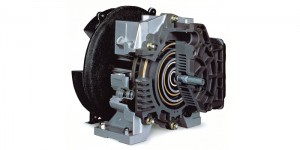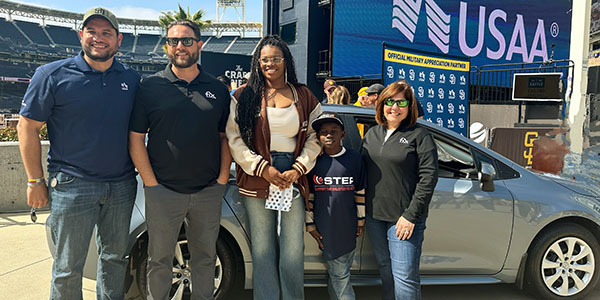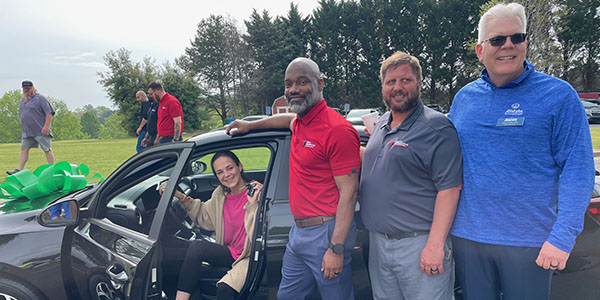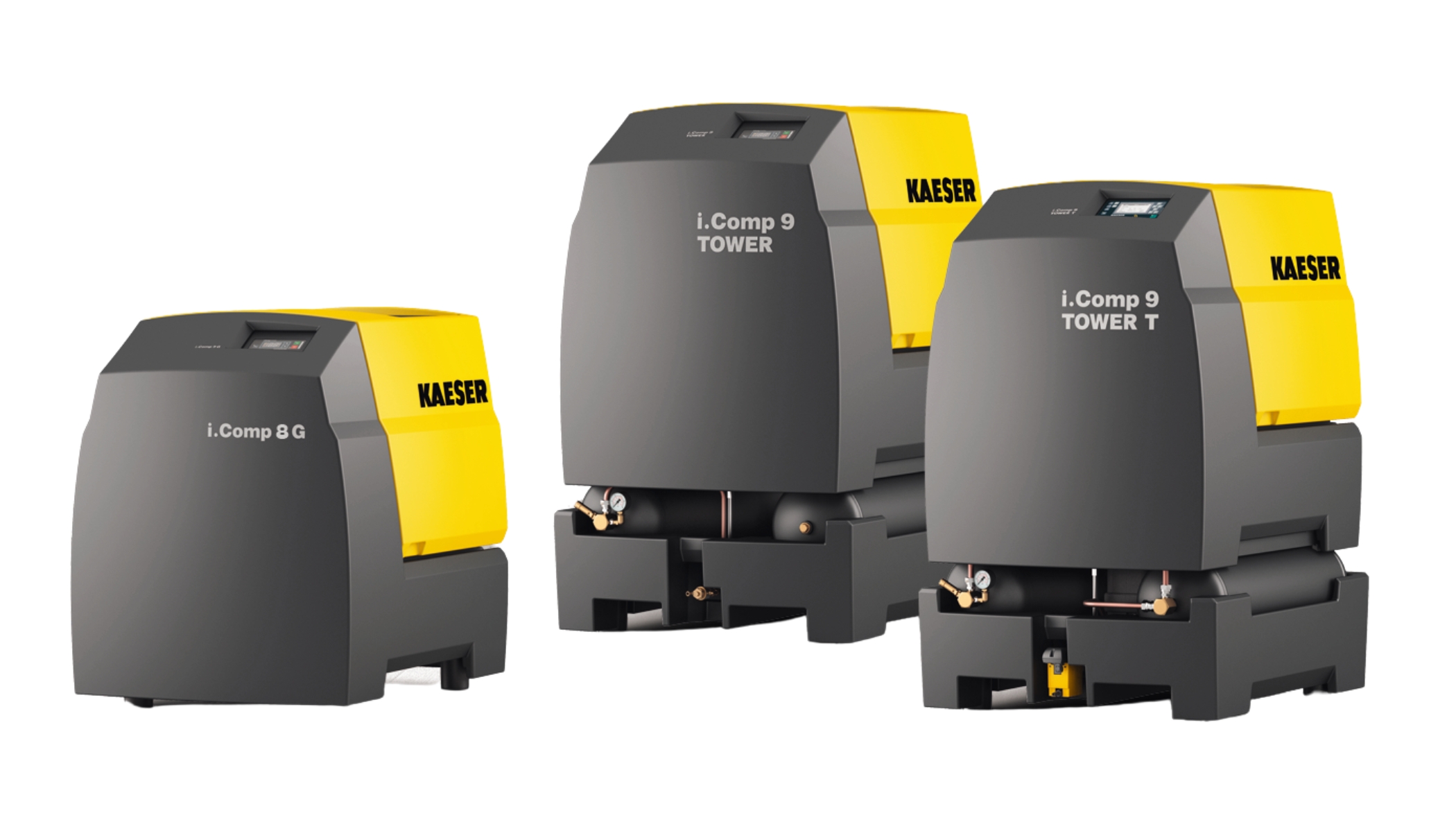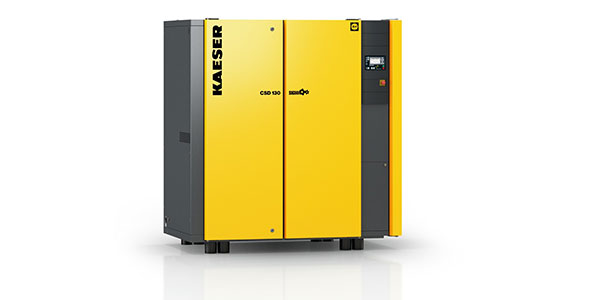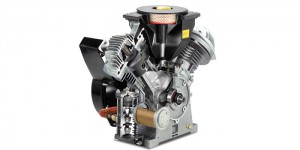 It’s another Saturday, and I’m in the mechanical repair shop getting my SUV worked on…again. My beloved 2003 GMC Yukon, also known as “Bessie,” is getting up there in age and also in miles. So, she’s in need of a lot of TLC and she has been requiring a lot more maintenance over the last few months.
It’s another Saturday, and I’m in the mechanical repair shop getting my SUV worked on…again. My beloved 2003 GMC Yukon, also known as “Bessie,” is getting up there in age and also in miles. So, she’s in need of a lot of TLC and she has been requiring a lot more maintenance over the last few months.
Bessie
I fell in love with Bessie the day I bought her brand new with only 45 miles on her odometer. Heck, she even retained her new car smell until about four years ago. Bessie has always treated my family right. She has never stranded us, and we’ve always taken care of her as well. But everything has a life expectancy, and Bessie has traveled exactly 210,946 miles to date.
Now, don’t get me wrong, I expected to have to replace the rotors and brakes on her at some point. You see, I’ve never had to replace the rotors before. Yes, you read that right: I’ve never had to replace the rotors on a truck with 210,946 miles. Then again, Bessie has always had qualified mechanics work on her. I’ve only put OEM parts on her (with a couple of minor exceptions – batteries and an alternator), and we’ve always adhered to the maintenance schedules and changed her oil diligently every 3,000 miles for the last 12 years.
Bessie is living proof (yes, I truly believe she’s alive) that routine maintenance makes a huge difference in life cycle expectancies of your vehicles. The same is true with your tools and equipment.
But even with the best maintenance schedules, you need to replace your capital investments at some point. With a substantial amount of second-, third- and fourth-generation collision repair shops out there, there are a number of items in your shop’s infrastructure that we don’t think about until they suddenly stop working. I can think of several such items, but one that sticks out is your air compressor.
Technology
Air compressors are literally the energy behind our shops’ most vital systems. There have been numerous changes to the air compressor industry since your grandfather put in that old piston air compressor back in 1963.
Let’s talk about grandpa’s compressor in the back of the shop for just a second. Chances are he installed a piston type or reciprocating air compressor many years ago and it has been chugging away ever since. These machines are extremely reliable, have low maintenance costs, consume significant amounts of energy and are very loud. For some of us, the nicest time of the day is when we shut everything down and that air compressor finally quiets down. The upside is that if you properly maintain them, they’ll last for years and even decades.
As you probably expected, there are newer air compressor technologies out there that are designed to work in our shops’ harsh environments. Two categories of air compressors that are typically used within collision repair facilities are piston or reciprocating and rotary. Within the rotary category, there are rotary screw, rotary scroll and rotary vane.
Audit Before You Acquire
Believe it or not, the questions that surround your air delivery system can be numerous. I caution you to think about exactly what you want to accomplish in your shops in the next 10 years before deciding on a product to replace your current air compressor. For instance, if you anticipate going low-VOC or waterborne anytime soon and are considering air circulators that are operated by your compressed air system, you’ll want to make sure to plan for that scenario right now.
As shop owners and managers, we can be a bit lazy when we look to replace our existing equipment. Heck, I don’t blame you for wanting to pick up the phone to call the same company that made the air compressor that lasted for more than 30 years. However, you could be doing your entire shop a disservice by purchasing the same technology again. So let’s talk about what we can do with a limited amount of effort to examine our shops’ real air delivery needs.
Quality manufacturers and/or their representatives will conduct an audit of your existing air compressor – its duty cycles, energy usage, pump-up tests, etc., to help you determine the real cost of your current system. The real cost of your old versus new air compressor is not just the purchase price but is a calculation of the total cost of ownership. This includes energy usage, maintenance, replacement parts, etc. However, don’t count out the fact that redos are a part of this equation.
The audit should last a minimum of a week, however, I recommend that you get an entire month’s worth of data under your belt during a typical production month. If January is your slowest month, don’t schedule the audit for that time because you won’t get the readings you need to make a proper decision and you’ll end up under-specifying your equipment needs.
Determine the amount of cubic feet per minute (CFM) and the amount of pressure per square inch (PSI) you’ll need to operate your facility properly. This is important because oversizing your air supply can cost you on your electric bill. After you conduct your air audit, you should have a good idea of your shop’s capacity needs.
Besides determining the pressure and volume needs of your facility, you need to look at the actual air delivery infrastructure within your shop. Does your shop have adequate pipe sizing and the correct type of pipe. Also, is the piping free of contaminants? Black iron and PVC are not recommended for compressed air delivery, but I bet more than a few of us still have these pipes in our facilities. Install enough air storage to prevent your shop from draining your air system when you kick in those new air circulators that you purchased for your spraybooth. The last thing you want to do is flood your dryers with humid air because you’ve liquidated your air storage and your compressor is struggling to keep up with the demand.
Designing Your Air Delivery System
When reviewing, designing and considering your air delivery system, you need to remember the following: Your air delivery system must have enough clean, dry and stable air pressure to meet your maximum needs.
We know that that’s easier said than done in a collision repair facility. By nature, we have a ton of particulates floating through the air all the time in our shops. Make sure that you and your manufacturer include more than adequate filtration systems – air intake filters, dryers, oil separators, particulate filters, coalescing filters, etc., depending on the air compressor technology you choose. Also, note that if you’re spraying waterborne, you have a much lower humidity threshold that has to be filtered out versus a shop that’s still spraying solvent-based paints.
Many of us use oil-lubricated air compressors, which carry over a small amount of oil into the compressed air. Depending on the air compressor technology, the amount of oil in your compressed air could become a concern if you’re a shop that’s looking to eliminate as many opportunities for defects as possible. The last thing you want is errant oil particles being fed into your spraybooth, causing contamination and redos. As the older piston air compressors age, their piston rings wear as well. As those tolerances widen, you should expect to see more oil particles being delivered to your shop, and unfortunately, your spraybooth.
Air compressor manufacturers now have options that include oil-free air compressors. This equipment utilizes coated internal parts, sealed bearings and other technology to remove all traces of oil from the system. Oil-free air compressors are used in the medical, food services and other industries that have a need for oil-free air streams.
Adequate storage of clean, dry, compressed air is key to meeting those times of high demand. Air storage is much less expensive than purchasing an air compressor with more horsepower. Take into account the duty cycles of the air compressors. Some air compressor technologies like to be run more frequently and others less frequently. Regardless, don’t design a system to provide 150 psi if all you truly need is 100 psi. This is where getting your equipment representative involved to help will prove invaluable. Designing a solid system will save you energy, maintenance cycles, and wear and tear on existing tools and allow for flexibility moving forward.
Location, Location
Another overlooked item is the air compressor’s location in the shop. Moving the air compressor outside will remove the noise from the facility, but could be hard on the air compressor and reduce its service life. Allow enough space so that the system can be easily accessed for servicing. A clean environment is recommended for the air compressor to reduce the amount of external debris that may buildup on the air compressor equipment. This debris can raise the operating temperature of the equipment and reduce its cooling efficiency. Don’t forget to account for proper ventilation of the area to remove excess heat appropriately. In the wintertime, that heat can also be reintroduced into your shop to help offset cooling costs.
Finally, if you decide that a piston air compressor is what you truly need, you’ll want to control the noise level from the air compressor as much as possible. The quieter you can design your shop, the less noise fatigue your staff will suffer thoughout the day. Remember, rotary-style compressors run much quieter than piston types. Some of these systems are quieter than your new dishwasher in your home. Of course, isolating the air compressor from the rest of the shop is another way to control sound emissions.
Warranties range from one to 10 years and everything in between on a new air compressor system. Ask about the warranty up front before the purchase, not after you’ve signed the paperwork and it has been delivered. Be aware of extended warranties that are tied to maintenance contracts. I’m not opposed to maintenance contracts, just go into your negotiations with “out-the-door pricing” in mind that includes the maintenance contract. Also, not everything is covered under the manufacturer warranty, especially consumables, so just be aware and have non-covered items listed for your reference.
Even if your warranty is not directly tied to a service contract, you need to get the air compressor and the rest of your equipment on regular service schedules. Servicing everything regularly will ensure your equipment continues to operate at peak performance. Don’t forget that best practices state you should be taking a look at your air compressor weekly to check for any maintenance issues and to look it over. The last thing you want is to be looking for a service tech to come out and fix your compressor on the busiest day your shop has seen in years.
Summary
Well, Bessie is out of the shop and I’m going to test her new brakes now. Along with her tune-up, she should be running like a top. I think it’s time for us to take Bessie out and stretch her legs again and have a nice family outing with the second love in my life, as well as my first love, Karen (yes, that’s my wife). October is that time of year to be taking a look at those beautiful autumn leaves.
So, as you see us driving down the road in our Indigo Blue Yukon with the Dale Earnhardt, Jr. sticker on the back window (thanks, Tom), kindly wave as we drive by. She’s still as beautiful as the day I first met her!
Contributors to this article include Michael Camber – marketing services manager, Kaeser Compressors; Matt Smith – national sales director, FS Curtis; Bill Kennedy – sales and products manager, Mattei Compressors; Andrew Penrod – product marketing manager, Atlas Copco Compressors, LLC.


